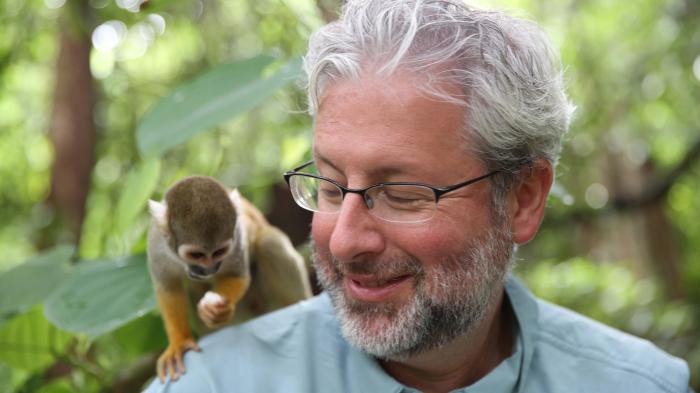Embark on an extraordinary voyage with Your Inner Fish video worksheet, a comprehensive guide to the captivating evolutionary journey from ancient fish to modern humans. Prepare to unravel the mysteries of our aquatic ancestry and gain a profound understanding of the scientific discoveries and evolutionary theories that connect us to the depths of the ocean.
Delve into the depths of comparative anatomy and physiology, exploring the striking similarities and subtle differences between fish and humans. Discover how natural selection and environmental pressures have shaped our adaptations over millions of years, leaving behind a legacy of homologous and vestigial structures that provide irrefutable evidence of our evolutionary kinship.
Introduction to “Your Inner Fish” Video
The “Your Inner Fish” video is a documentary that explores the evolutionary history of vertebrates, with a particular focus on the origins of humans. The video is narrated by Neil Shubin, a paleontologist and evolutionary biologist who played a key role in the discovery of Tiktaalik roseae, a transitional fossil that provides evidence of the evolutionary link between fish and land-dwelling vertebrates.
The video presents a wealth of scientific discoveries and evolutionary theories that support the idea that all vertebrates, including humans, share a common ancestor in the oceans. It discusses the major transitions in vertebrate evolution, from the development of jaws and limbs to the evolution of lungs and the ability to live on land.
The Premise of the Video
The premise of the video is that the human body is a product of evolution, and that our evolutionary history is closely intertwined with the history of life on Earth. The video argues that by understanding our evolutionary past, we can gain a deeper understanding of ourselves and our place in the natural world.
Key Themes of the Video
The key themes of the video include:
- The unity of life: All vertebrates, including humans, share a common ancestor.
- The importance of transitional fossils: Transitional fossils provide evidence of the evolutionary links between different groups of organisms.
- The role of natural selection: Natural selection is the driving force behind evolution.
- The interconnectedness of life: All living things are interconnected and interdependent.
The Narrator’s Perspective
The narrator, Neil Shubin, is a passionate advocate for the importance of science and education. He believes that understanding our evolutionary past is essential for understanding ourselves and our place in the natural world. Shubin’s enthusiasm for his subject matter is evident throughout the video, and he makes complex scientific concepts accessible to a general audience.
Evolutionary Journey from Fish to Humans
The evolutionary journey from ancient fish to modern humans is a captivating narrative of adaptation, natural selection, and the relentless pursuit of survival. This odyssey spans millions of years and has resulted in the development of complex anatomical and physiological features that distinguish us from our aquatic ancestors.
Key Anatomical and Physiological Adaptations
The transition from fish to humans involved a series of profound anatomical and physiological adaptations, including:
- Development of a vertebral column, providing structural support and mobility.
- Evolution of paired appendages (limbs), enabling locomotion on land.
- Enlargement of the brain and development of complex cognitive abilities.
- Evolution of a diaphragm, allowing for efficient respiration.
- Development of a four-chambered heart, ensuring efficient circulation.
Role of Natural Selection and Environmental Pressures
The driving force behind these adaptations was natural selection. Fish that possessed advantageous traits, such as stronger limbs or larger brains, were better equipped to survive and reproduce in their changing environment. Over time, these advantageous traits became more prevalent in the population, leading to the gradual evolution of new species.
Homologous and Vestigial Structures
The evolutionary connection between fish and humans is further supported by the presence of homologous structures, which are similar structures with different functions. For example, the forelimbs of fish, amphibians, reptiles, birds, and mammals all share a common evolutionary origin, despite serving diverse functions such as swimming, walking, flying, and grasping.
Vestigial structures are remnants of ancestral structures that have lost their original function. The human tailbone, for instance, is a vestigial structure that provides evidence of our evolutionary lineage from tailed ancestors.
Comparative Anatomy and Physiology
Comparative anatomy and physiology provide valuable insights into the evolutionary journey from fish to humans. By examining similarities and differences in the anatomy and physiology of fish and humans, we can gain a deeper understanding of human biology and evolution.
Organs, Tissues, and Systems, Your inner fish video worksheet
- Heart:Both fish and humans have a heart that pumps blood throughout the body. However, the heart of fish is simpler, consisting of two chambers (an atrium and a ventricle), while the human heart has four chambers (two atria and two ventricles).
- Lungs:Fish have gills for respiration, while humans have lungs. Gills extract oxygen from water, while lungs extract oxygen from air. This adaptation reflects the different environments in which fish and humans live.
- Nervous System:Both fish and humans have a central nervous system consisting of a brain and spinal cord. However, the human brain is significantly more complex, with larger cerebral hemispheres responsible for higher-level functions such as cognition and language.
Genetic and Molecular Evidence

Genetic and molecular evidence provides compelling support for the theory of evolution from fish to humans. These lines of evidence include DNA similarities, genetic mutations, and the use of molecular clocks to estimate evolutionary relationships.
One of the most striking pieces of genetic evidence for evolution is the similarity in DNA sequences between different species. For example, humans and chimpanzees share approximately 98% of their DNA sequence, indicating a close evolutionary relationship. This high degree of similarity extends to other mammals, birds, and even fish, suggesting a common ancestor for all vertebrates.
Genetic Mutations
Genetic mutations are changes in the DNA sequence that can occur randomly or be induced by environmental factors. These mutations can have a variety of effects, including altering the function of proteins or changing the regulation of gene expression. Mutations that are beneficial to an organism can be passed on to offspring, providing a mechanism for evolution.
Molecular Clocks
Molecular clocks are based on the assumption that the rate of DNA sequence change is relatively constant over time. By comparing the DNA sequences of different species, scientists can estimate the amount of time that has passed since they diverged from a common ancestor.
Molecular clocks have been used to estimate the evolutionary relationships between a wide range of species, including humans and other primates.
Specific Genes and Genetic Sequences
Specific genes and genetic sequences have been used to study human evolution in great detail. For example, the Hox genes are a family of genes that play a crucial role in embryonic development. The Hox genes are highly conserved across all vertebrates, but they have undergone some changes in humans that are associated with the development of our unique features, such as our upright posture and our large brains.
Implications for Human Health and Disease
Understanding our evolutionary history can provide valuable insights into human health and disease. Evolutionary principles help us identify genetic predispositions to certain diseases, develop more effective treatments, and implement preventive measures.
Genetic Predispositions
Our evolutionary past has shaped our genetic makeup, including predispositions to specific diseases. For example, the sickle cell trait, which protects against malaria in certain regions, also increases the risk of sickle cell anemia. Similarly, the APOE-e4 allele, linked to our hunter-gatherer ancestry, is a risk factor for Alzheimer’s disease.
Treatment Development
Evolutionary knowledge can guide the development of new treatments. By understanding the evolutionary origins of diseases, researchers can identify potential targets for drug therapies. For instance, the development of antibiotics was inspired by the observation that bacteria evolve resistance to existing antibiotics.
Disease Prevention
Evolutionary principles can inform public health measures to prevent diseases. By understanding the factors that contribute to disease transmission and evolution, we can develop more effective strategies for vaccination, sanitation, and other preventive measures. For example, knowledge of the evolutionary history of influenza viruses helps guide the development of annual flu vaccines.
Philosophical and Ethical Considerations
The theory of evolution from fish to humans raises profound philosophical and ethical questions. It challenges traditional notions of human exceptionalism and forces us to reconsider our place in the natural world.
Impact on Human Nature, Purpose, and Place in the Universe
The evolutionary perspective suggests that humans are not the culmination of creation but rather a product of a long and winding evolutionary journey. This realization can lead to a sense of humility and a greater appreciation for the interconnectedness of all life.
Ethical Dilemmas Raised by Genetic Engineering
Advances in genetic engineering raise ethical concerns about the potential manipulation of human evolution. Scientists must grapple with the responsibility of ensuring that these technologies are used wisely and ethically, considering the potential consequences for individuals, society, and future generations.
Clarifying Questions: Your Inner Fish Video Worksheet
What is the main theme of the “Your Inner Fish” video?
The main theme of the “Your Inner Fish” video is the evolutionary journey from fish to humans, highlighting the scientific discoveries and evolutionary theories that support this connection.
How does the video use comparative anatomy to demonstrate evolutionary relationships?
The video compares the anatomy and physiology of fish and humans, focusing on similarities and differences in organs, tissues, and systems, providing evidence for shared ancestry.
What role does genetic evidence play in supporting the theory of evolution from fish to humans?
Genetic evidence, such as DNA similarities and genetic mutations, is used to trace evolutionary relationships and estimate the time since divergence from a common ancestor.
How does the video explore the implications of evolutionary knowledge for human health?
The video discusses how evolutionary principles can help us understand genetic predispositions, develop treatments, and prevent diseases, linking our evolutionary history to present-day health concerns.

